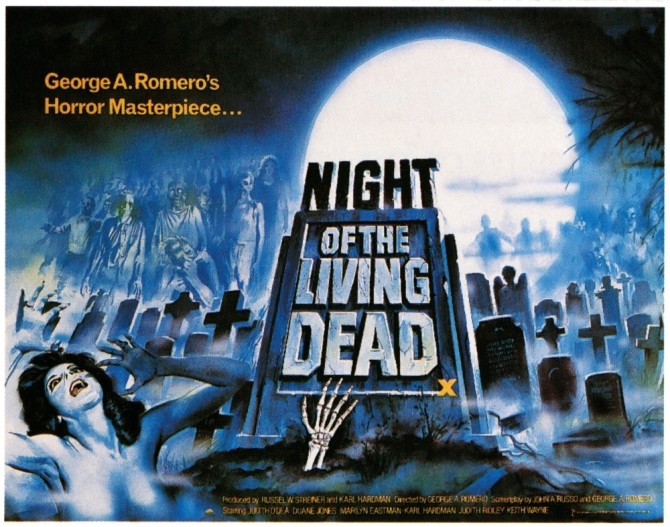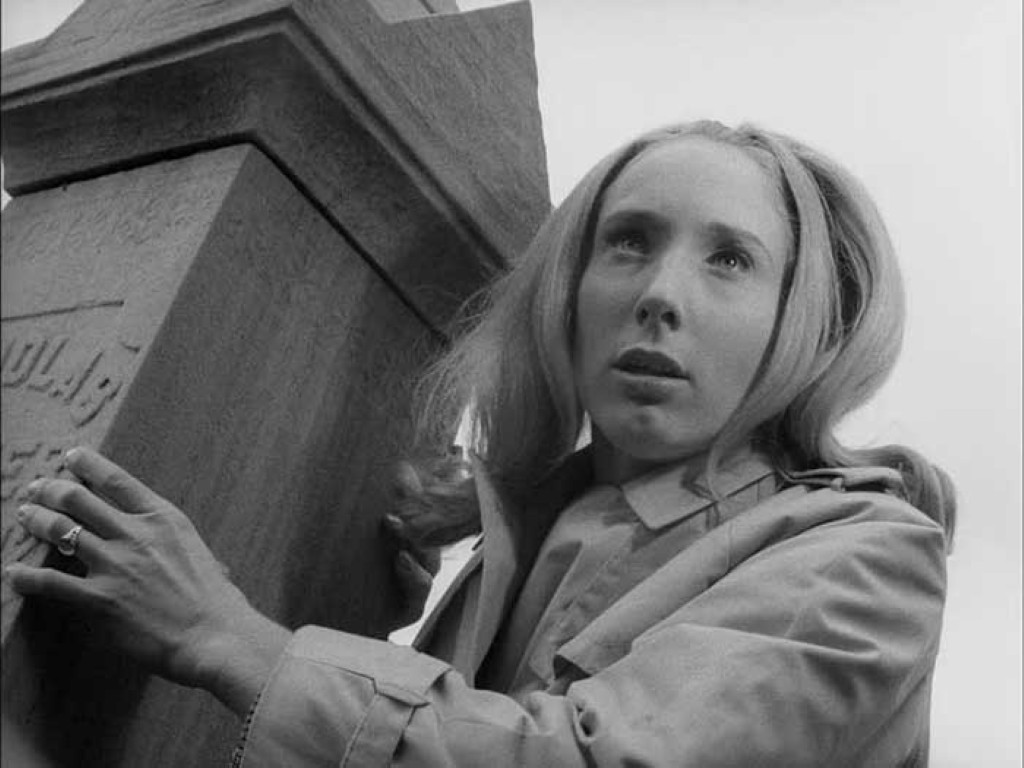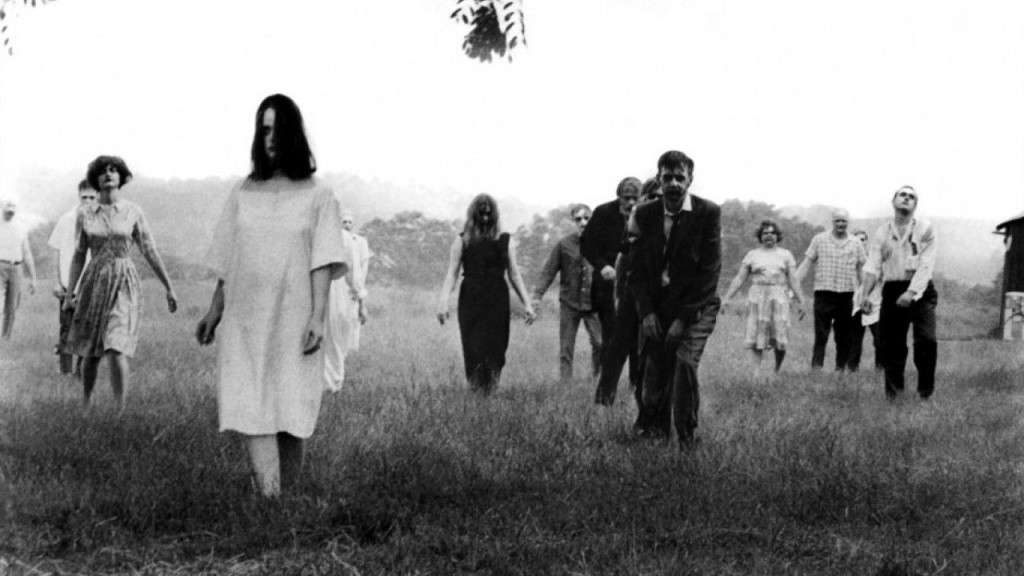SPECIAL HALLOWEEN HORROR SHOWDOWN POST!
Guess what, guys? Halloween Horror Showdown is just one week away! That’s right, your Horror Showdown entries are due next Thursday by 11:59pm. Make sure you’ve got a killer logline and an alluring e-mail query. I think I already have more entries than all of Sci-Fi Showdown, which I promoted for six months. So you better bring your A-Game if you want to get picked.
In the meantime, I thought we’d take a look at one of the greatest horror movies of all time. I remember seeing Night of the Living Dead at a young age and thinking, “This is sooooo unsettling.” The movie felt more like real life than any horror film I’d seen before. Which didn’t make any sense to my peon brain at the time since the movie wasn’t even in color!
I remember this movie being more of a directing tour de force than a class in great screenwriting. But you can always learn a new writing lesson or two from a good movie. So let’s see if we can’t download a few horror lessons here.
1) In Media Res – Not every movie has to start off with your traditional 25 pages of plot and character setup. Another option, especially with horror, is to throw your characters into the story immediately (in media res). Night of the Living Dead gives us one scene – ONE SCENE (setting up the two characters in the car) – and then it’s off to the races. They’re immediately attacked in the cemetery. Note that the writer is able to do this, in part, because he knows the characters are going to be in the house for the rest of the movie, which will allow him to retroactively set up characters there.
2) Good old fashioned foreshadowing – You’re not doing it right in horror if you’re not foreshadowing. Here, in the very first scene, we get some foreshadowing when Tom is about to exit the car to join his sister. The radio station is broadcasting static. A second later, the rattled DJ comes back on and apologizes for the service interruption. Uh oh. We now know something bad is afoot! Foreshadowing!
3) Don’t make your gravesite visit cliche – What you might have overlooked in Night of the Living Dead is that in the opening cemetery scene, Tom doesn’t want to be there. He doesn’t care about visiting his father. This saps away much of the melodrama you typically see in scenes like this and makes it more realistic. Barbra, meanwhile, *is* sad. Which helps create conflict to give the scene some energy before the zombies show up. In most of the amateur scripts I read where someone visits a gravesite, it’s predictably sad and melodramatic. Which isn’t real life! In real life, people have complex feelings about the death of loved ones. Not to mention, everyone processes death in a different way. Sometimes with sadness, yes. But also with humor, anger, indifference – a whole range of emotions.
4) The reason zombies have worked for 50 years – The main reason zombies work is because they’re the ultimate “milking” monsters. Let me explain that. An argument can be made that all good storytelling is is milking situations for as long as possible. Milking situations is what creates SUSPENSE and TENSION and ANTICIPATION. These days, too many writers jump right into the action. The killer sees his victim and pounces on him immediately! That’s an amateur mistake. Instead, you want to look for scenarios that you can draw out for as long as possible. That’s why zombies will always work. No zombie kill comes right away. It’s drawwwwwwnnnnn out sloooowwwwwllllyyy. And that’s the way audiences like it. Just remember, horror is almost always about the buildup, not the payoff. A zombie movie does a lot of that work for you.
5) No Free Passes – In a horror film, there should be no safe spaces for your characters. You’re running from zombies and find a house? That house better have its own challenges once your characters enter it. In Night of the Living Dead, when the heroes get to the house, there’s a group of people living in the basement who have a different opinion on how the house should be used to fend off the zombies. That creates problems for our upstairs heroes.
6) Conflict between characters – The more the character goals of the people inside the house clash, the better. That’s where the conflict lies. All Ben cares about is boarding up the house to keep the zombies out. Barbara, meanwhile, wants to go back and save her brother. This contrast in goals keeps things heated between them, which is what you want. Just like we talked about yesterday, when characters continually agree with each other, the audience gets bored.
7) “In and Out” screenwriting – To keep things interesting in a contained location, your heroes either need to be pushing “out” on the story (doing something to change their circumstances) or the writer needs to be pushing “in” on your characters (the writer throws a new challenge at the heroes that they must deal with). With Night of the Living Dead, Ben starts off by pushing “out” on the story. He boards up every window in the place. He’s determined to make sure these things don’t get in here. Later, the writer pushes “in” on Ben and Barbara, throwing a secret second group of people into the mix from down in the basement. To see if you’ve executed your “In and Out” attack correctly, bring the script to In and Out, mention Scriptshadow, and the cashier will read the script for you right there. If she thinks you did a good job, she will give you a free double-double.
8) The secret to a strong second act (it must go from bad to worse) – The trick with second acts is to make things go from bad to worse. When Ben and Barbara first get to the house, there are 3 zombies outside. By the halfway point, there are already 30 zombies outside. It just got from bad to worse. And from there, you want it to get even WORSE. If things don’t continue to get worse, your story won’t feel like it’s progressing.
9) New characters are your best friends in limited location movies – The whole reason people make single-location movies is because they’re cheap. You only have to secure a single location! However, single location films are often fool’s gold since most writers can’t come up with enough interesting plot beats to last an entire movie. Enter new characters. New characters ARE the new locations in a single location movie. They are one of your only options to freshen up a monotonous single-location story. So use them. You can bring in one new mysterious character or keep new characters coming in throughout the story, like Night of the Living Dead did. Just make sure these characters aren’t there solely to add fresh blood. Make them interesting unto themselves and have them bring something to the story that spruces it up.
10) Night of the Living Dead is one of the original ‘low budget do it yourself’ success stories They couldn’t shoot the film in color because it was too expensive. Most filmmakers would’ve given up at this point. But Romero decided to use cheaper black and white film. Ironically, that gave the movie its creepy realistic documentary feel, which helped turn it into a classic. This is your monthly reminder that you can fast track your writing career by shooting your own scripts. If someone could shoot a film in 1967 when you had to go through the hassle of buying, shooting with, processing, and printing film, you can easily bust out that new cinema iPhone and shoot one of your scripts now. Right?
$100 OFF FEATURE OR PILOT CONSULTATION – next 72 hours only! – Sending your screenplay out there without getting professional feedback? Are you trying to get your script rejected?? Let me help you fix those script issues ahead of time so we can suck those tired readers in and give them the ride of their life. I do consultations on everything from loglines ($25) to treatments ($100) to pilots ($399) to features ($499). E-mail me at carsonreeves1@gmail.com with the subject line “CONSULTATION DEAL” if you’re interested in the deal. Otherwise, e-mail me if you have any additional questions. Chat soon!




